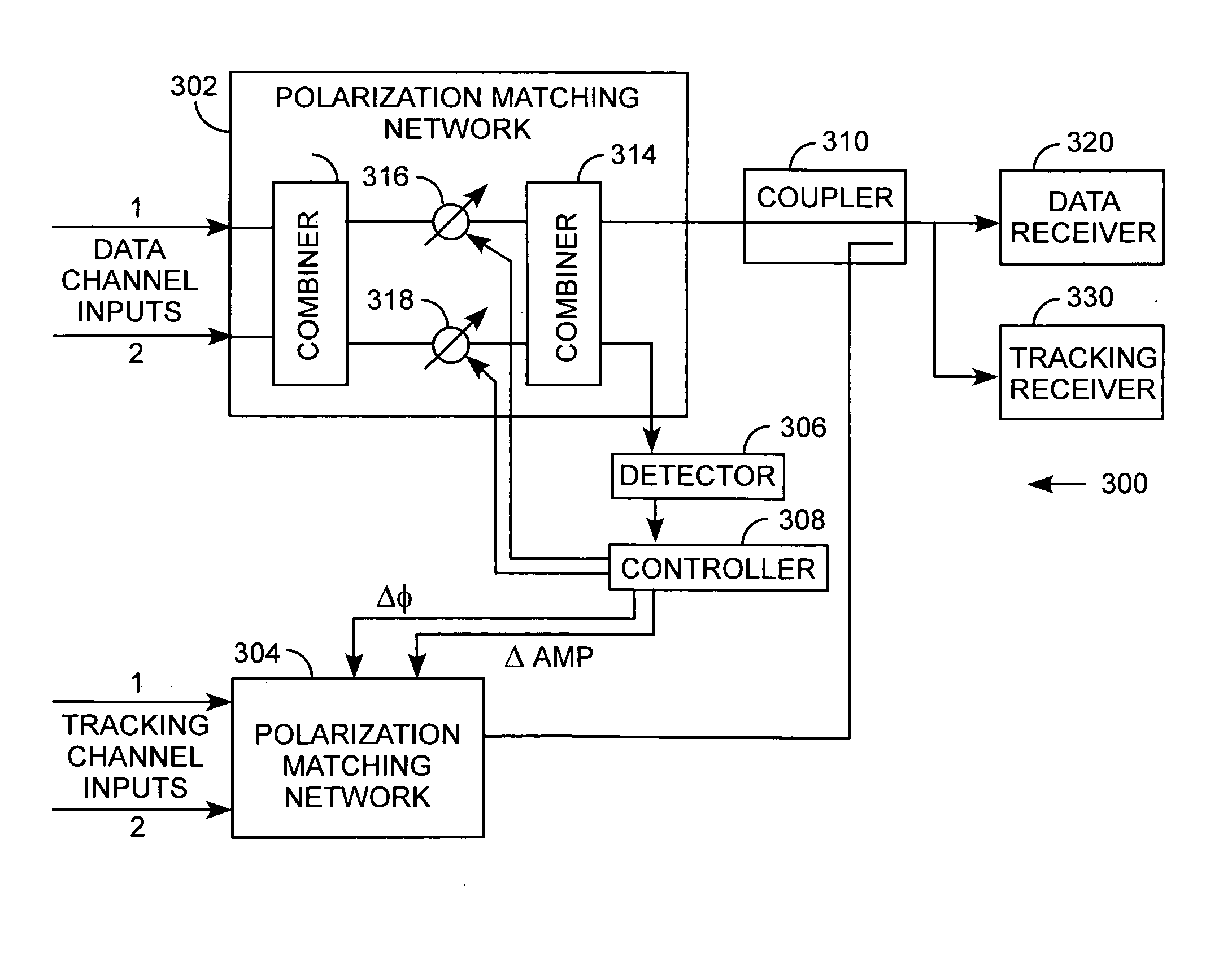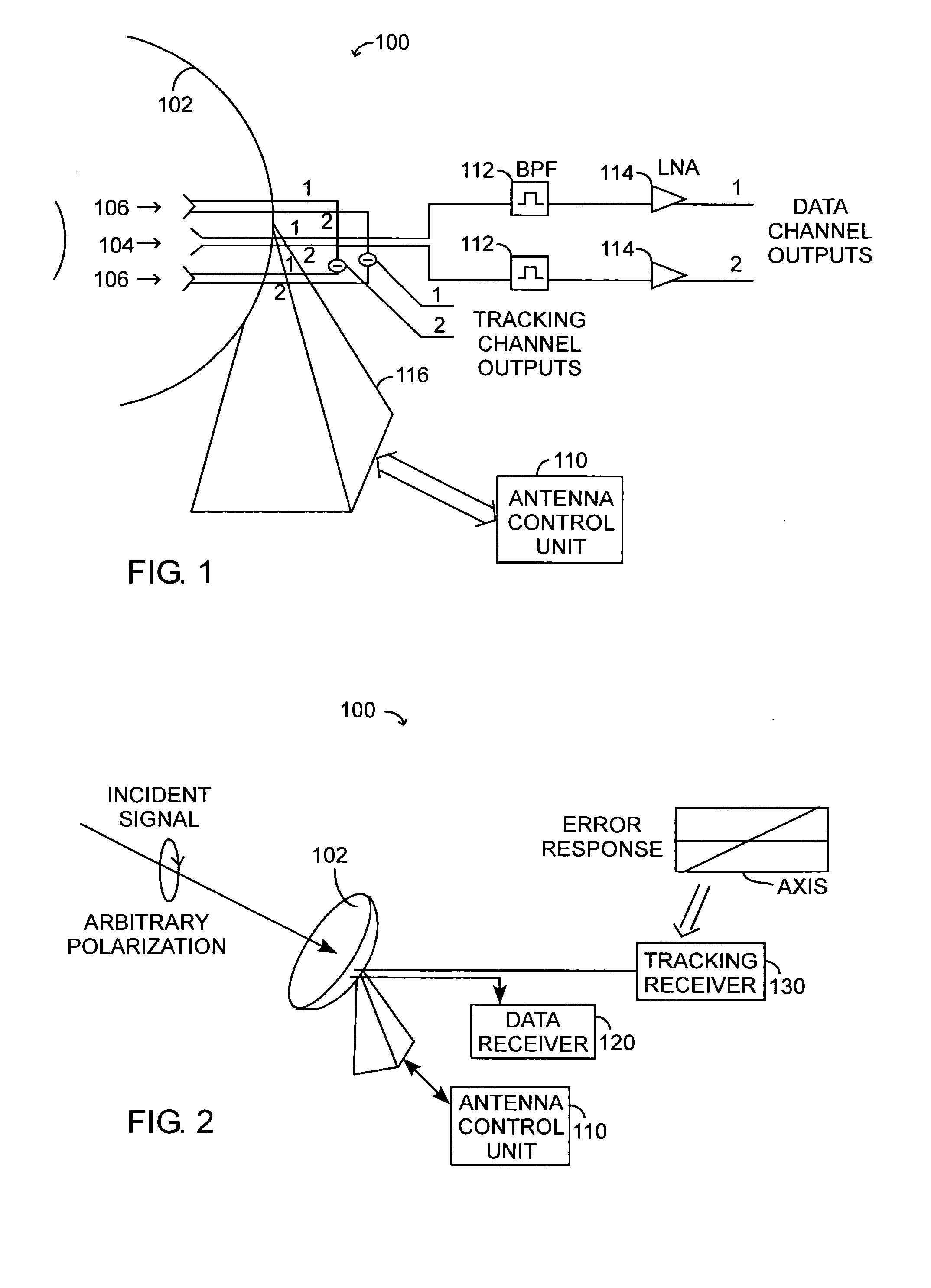Methods and systems for tracking signals with diverse polarization properties
a tracking signal and polarization technology, applied in the direction of polarised antenna unit combination, transmission monitoring, instruments, etc., can solve the problems of unstable tracking performance, performance degradation, and incident field matching the design polarization of a given antenna not always received, so as to reduce system sensitivity and avoid or lessen this unstable operation
- Summary
- Abstract
- Description
- Claims
- Application Information
AI Technical Summary
Benefits of technology
Problems solved by technology
Method used
Image
Examples
Embodiment Construction
[0023] The following is a detailed description for carrying out the invention. This description is not to be taken in a limiting sense, but is made merely for the purpose of illustrating the general principles of the invention.
[0024] The present invention generally involves methods and systems for tracking signals that have diverse polarization properties. Referring to FIG. 1, an antenna system 100 according to an example embodiment of the present invention includes a reflector antenna 102, a central feed 104, tracking feeds 106, an antenna control unit (ACU) 110, band pass filters 112, low noise amplifiers 114 and a positioner 116, configured as shown. The example antenna system 100 has a tracking feed design that is configured to provide orthogonally polarized terminals for both data and tracking channels. A reflector antenna with a Cassegrain configuration, by way of example, provides high gain performance with an associated narrow beamwidth and uses a closed loop tracking syste...
PUM
 Login to View More
Login to View More Abstract
Description
Claims
Application Information
 Login to View More
Login to View More - R&D
- Intellectual Property
- Life Sciences
- Materials
- Tech Scout
- Unparalleled Data Quality
- Higher Quality Content
- 60% Fewer Hallucinations
Browse by: Latest US Patents, China's latest patents, Technical Efficacy Thesaurus, Application Domain, Technology Topic, Popular Technical Reports.
© 2025 PatSnap. All rights reserved.Legal|Privacy policy|Modern Slavery Act Transparency Statement|Sitemap|About US| Contact US: help@patsnap.com



